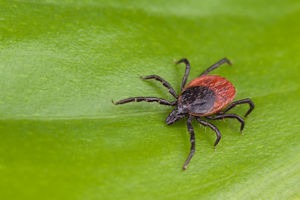What is a Deer Tick: A Guide on How to Identify One in MD and VA
Millions of people get bit by ticks each year, which accounts for approximately 30,000 diagnoses of Lyme disease.
If you live in southeast states like Maryland and Virginia, you need to be aware of the prevalence of ticks. When you know how to properly identify them and take the correct measures, you will be better able to protect yourself.
In Maryland and Virginia specifically, you need to be aware of deer ticks “” particularly if you live in more rural and wooded areas.
What is a deer tick?
Below we’ll discuss these ticks and how you can look after your health and well-being.
What is a Deer Tick?
First and foremost, you should learn all about deer ticks so that you can identify and avoid them.
These ticks are typically reddish in color and about the size of an apple seed. They can live for about 2 years in the wild, and you should be particularly mindful of them when you’re participating in outdoor activities like camping, fishing, hiking, and hunting.
Keep in mind that deer ticks are more than just pests “” they can also present a health hazard.
Deer tick bites can put you at risk for Lyme disease, which can create flulike symptoms and long-term health concerns. They tend to bite areas of the body that are moist and warm, so check your knee and elbow joints, stomach, neck and other such areas.
Since they can be so small, you will need to give yourself a thorough check to make sure that you aren’t missing anything.
The tick will usually stay attached and will keep growing in size the more blood it draws from your body. It is best to spot the tick as early as possible to prevent further blood loss and any health complications.
What You Should Do if You Have a Tick
You need to be very careful about the way that you remove ticks from your body. If they aren’t completely removed, they can stay partially attached can continue sucking your blood.
The best way to go about it is by sitting in a very well-lit area and carefully removing the tick with a set of tweezers. Use steady pressure and remove the tick vertically, without squeezing too hard or twisting it.
After the tick is removed, place it in a plastic bag or other containers, just in case you need to get your doctor to identify it as a deer tick or any other tick later on. Clean the bite with hot water and mild antibacterial soap for several minutes, and apply rubbing alcohol to the area.
Be aware of your health and wellness moving forward, and reach out to the doctor if you start experiencing any sort of flu-like symptoms.
The best way to avoid deer ticks altogether is to always cover up vulnerable areas of your body when you are going outdoors into wooded areas.
Manage Your Exposure to Ticks
So now that we’ve answered “what is a deer tick?” and other pressing questions, be sure that you follow these words of advice.
Deer ticks are some of the biggest pests you should be concerned about when spending time outdoors.
We can help you out with any other pest information and needs you might have also. Take the time to contact us online for your pest control needs, and reach out to us by phone at (800) 990-0335.
NEED HELP?
If you live in Southern Maryland, or Northern Virginia
FIND YOUR SOLUTION HERE
People, Pet & Pollinator Safe! Pest control for people who care.
